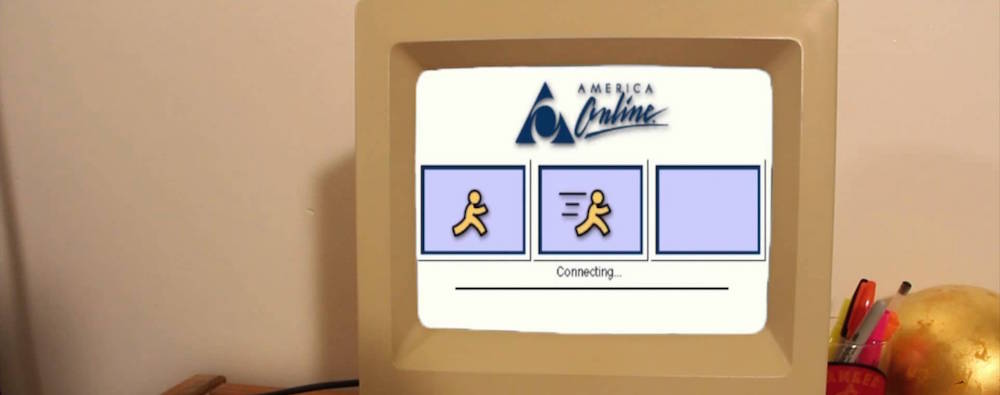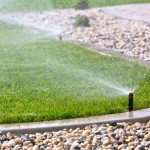
The Stockton, CA, metro area sits at the northern tip of the San Joaquin Valley, the world’s most plentiful agricultural region. Among the more than 250 crops produced annually are asparagus, cherries and strawberries.
Speaking of distinctions, the Stockton area has a dubious one in another field — communication.
Among the 100 largest metro areas in the U.S., Stockton has the most households using dial-up internet service on a percentage basis, according to a LawnStarter analysis of 2014 data from the U.S. Census Bureau’s American Community Survey. In the Stockton area, a little over 2 percent of computer households depend on dial-up, or 1 of every 46.6 households with computers.
Before we move along, let’s explain why we decided to do this analysis. Yes, we are a lawn care startup, but we’re a lawn care startup that needs the internet to thrive. So we’re constantly curious about internet trends — or, in the case of dial-up, the obvious absence of trendiness.
Sunne McPeak is president and CEO of the California Emerging Technology Fund.
‘Significant Challenges’
The Stockton numbers are in line with a new survey from the California Emerging Technology Fund showing that 3 percent of Californians rely on dial-up internet service. Nationwide, the dial-up figure for 2015 was 2 percent, according to the Pew Research Center.
Sunne McPeak, president and CEO of the California Emerging Technology Fund, say she’s not surprised by Stockton’s ranking in LawnStarter’s dial-up study, as the farming region has a high concentration of low-income households. Furthermore, Stockton boasts a big Latino population, and Latinos throughout the U.S. continue to lag white Americans in terms of internet access.
Some people do not feel that broadband connectivity is important enough to change to it.
— Larry Chiagouris, Pace University marketing professor
“Although we have been making steady progress in California in closing the digital divide, we still have significant challenges because of the size and diversity of the state — California has big rural areas, difficult terrain and a large population,” McPeak says.
In the U.S., dial-up internet access reached its peak in 2001, when 41 percent of American adults with at-home internet access had dial-up service, according to the Pew Research Center.
Thousands of Dial-Up Households
But even as super-speedy broadband internet service has come to dominate American homes, some people still depend on dial-up. Slate.com says that in 2015, nearly 2.2 million subscribers were clinging to dial-up service from AOL, which was the king of dial-up in its heyday.
Our study shows that across the country’s 100 largest metro areas, nearly 450,000 households were using dial-up service in 2014, the most recent year for which Census Bureau figures are available.
Here is a table showing how many metro areas have at least 10,000 dial-up households. Not surprisingly, these metros are among the most populous in the U.S.
| Metro Area | # of Households With Dial-Up |
|---|---|
| New York, NY | 29,084 |
| Los Angeles, CA | 26,507 |
| Chicago, IL | 19,857 |
| Dallas-Fort Worth, TX | 13,936 |
| Philadelphia, PA | 11,322 |
| Minneapolis-St. Paul, MN | 10,562 |
| Miami-Fort Lauderdale, FL | 10,343 |
| Houston, TX | 10,330 |
Bucking the Broadband Trend
Why are so many Americans holdouts when it comes to ditching dial-up? A 2009 Pew survey offers some insight. At that time, one-third of dial-up users cited price as a barrier to upgrading their internet service, while 17 percent said broadband wasn’t available in their area. In the 2009 survey, one-fifth of dial-up users vowed they’d never give up the outdated technology.
“Some people do not feel that broadband connectivity is important enough to change to it. They do not use the internet often enough to warrant dropping dial-up,” says Larry Chiagouris, an expert on internet branding who is a marketing professor at Pace University.
Larry Chiagouris is a marketing professor at Pace University.
Older Americans, along with those who barely use the internet, are among those who’ve been most reluctant to give up dial-up, Chiagouris says. But even they might have to embrace broadband in the near future.
“In about two or three years, almost all dial-up will be eliminated due to economic and technological changes,” Chiagouris predicts.
With Stockton holding down the No. 1 spot, here’s our list of the 12 metro areas with the most dial-up users per household, based on data from the U.S. Census Bureau’s 2014 American Community Survey.
In Stockton, 1 in every 46.6 computer households has dial-up.
Number of households with computers: 185,555
Number of computer households with dial-up: 3,985
Percentage of computer households with dial-up: 2.15%
In Cape Coral-Fort Myers, 1 in every 47.4 computer households has dial-up.
Number of households with computers: 228,255
Number of computer households with dial-up: 4,811
Percentage of computer households with dial-up: 2.11%
In Scranton/Wilkes-Barre, 1 in every 64.8 computer households has dial-up.
Number of households with computers: 174,525
Number of computer households with dial-up: 2,692
Percentage of computer households with dial-up: 1.54%
In Spokane, 1 in every 71.6 computer households has dial-up.
Number of households with computers: 183,370
Number of computer households with dial-up: 2,561
Percentage of computer households with dial-up: 1.40%
In Buffalo, 1 in every 72.7 computer households has dial-up.
Number of households with computers: 385,295
Number of computer households with dial-up: 5,299
Percentage of computer households with dial-up: 1.38%
In Allentown, 1 in every 74.9 computer households has dial-up.
Number of households with computers: 267,461
Number of computer households with dial-up: 3,570
Percentage of computer households with dial-up: 1.33%
In Madison, 1 in every 80.2 computer households has dial-up.
Number of households with computers: 236,546
Number of computer households with dial-up: 2,948
Percentage of households with dial-up: 1.25%
In Boise, 1 in every 82.9 computer households has dial-up.
Number of households with computers: 215,056
Number of computer households with dial-up: 2,593
Percentage of computer households with dial-up: 1.21%
In Youngstown, 1 in every 89 computer households has dial-up.
Number of households with computers: 180,341
Number of computer households with dial-up: 2,027
Percentage of computer households with dial-up: 1.12%
In Winston-Salem, 1 in every 89 computer households has dial-up.
Number of households with computers: 209,722
Number of computer households with dial-up: 2,357
Percentage of computer households with dial-up: 1.12%
In Fresno, 1 in every 92.2 households has dial-up.
Number of households with computers: 248,489
Number of computer households with dial-up: 2,696
Percentage of computer households with dial-up: 1.08%
In Augusta, 1 in every 93.1 households has dial-up.
Number of households with computers: 170,338
Number of computer households with dial-up: 1,830
Percentage of computer households with dial-up: 1.07%
Image sources
www.instagram.com/stocktonca/
www.cityftmyers.com/CivicAlerts.aspx?AID=477
www.flickr.com/photos/photommo/
https://my.spokanecity.org/mayor/
www.buffalo.edu/news/releases/2014/10/034.html
www.flickr.com/photos/macgodbrad/
www.flickr.com/photos/137576500@N07/
http://nw.meetingsmags.com/boise-boasts-banner-year
https://app-dev.us.kent.edu/SpringBreakTrip/Youngstown.aspx
www.visitwinstonsalem.com/
www.rent.com/california/fresno-apartments/2-631
www.nashvillelifestyles.com/entertainment/five-great-spots-to-eat-and-drink-in-augusta-georgia



















